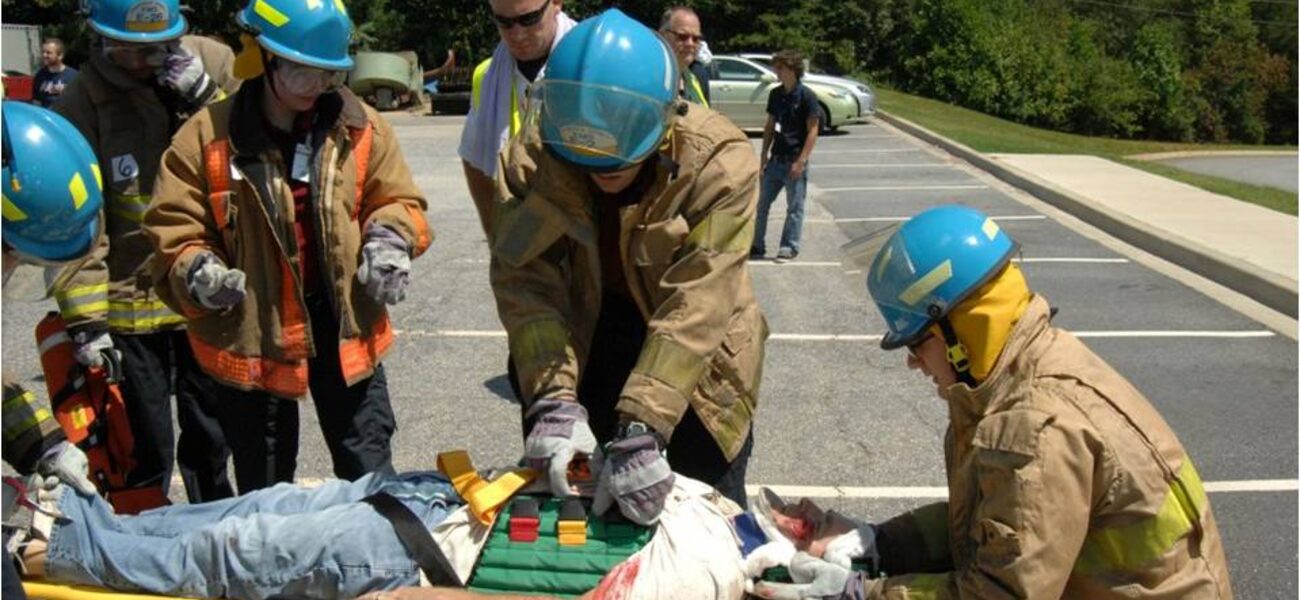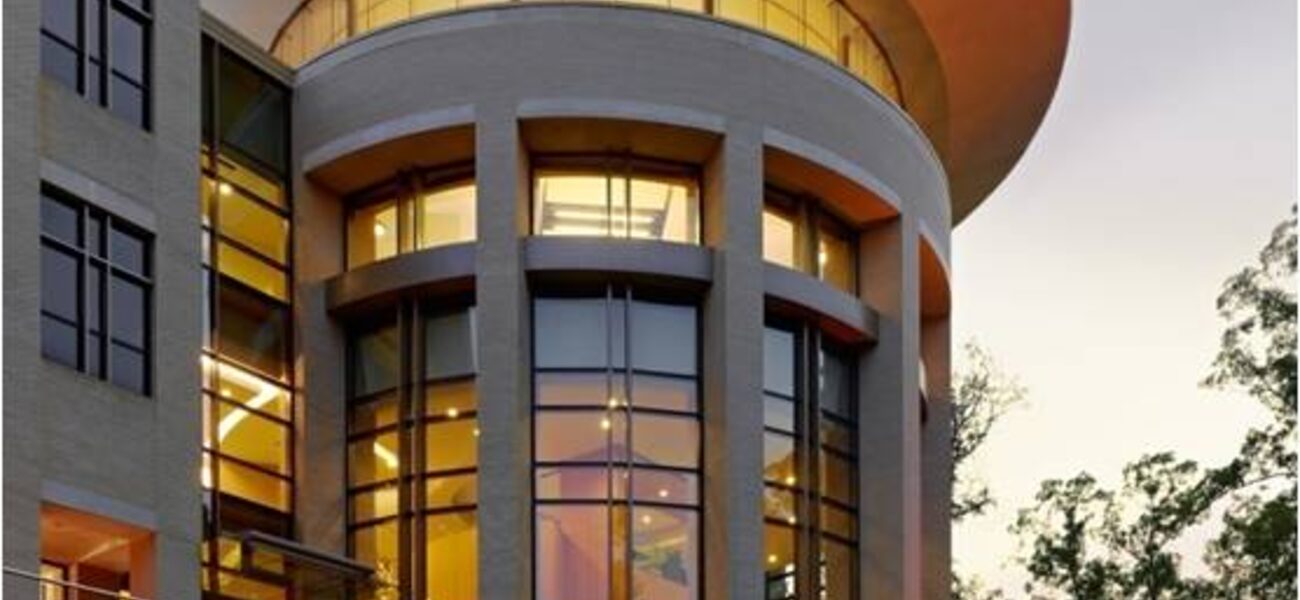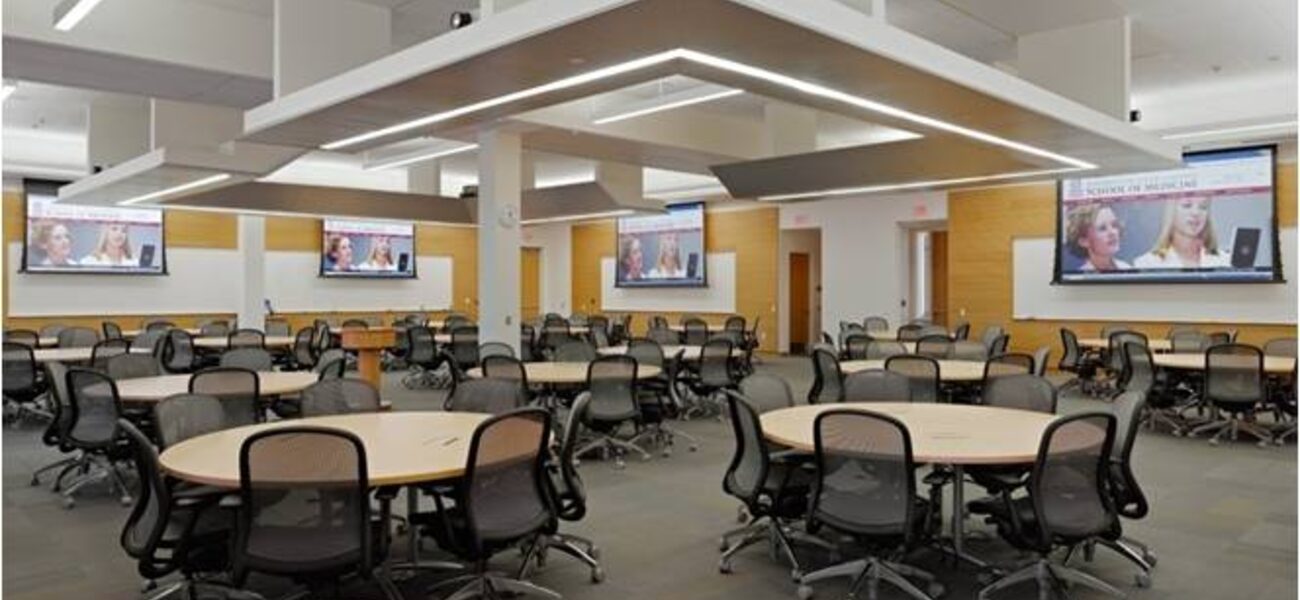The Greenville Health System (GHS) is capitalizing on the combined strength of its long-standing commitment to education and its partnerships with regional universities to flip the model of the academic health center and create a “clinical university.”
The traditional academic health center is a university with a teaching hospital or affiliates, including a medical school and at least one other health professions educational program. To create the clinical university, GHS—one of the largest healthcare systems in the Southeast and the 13th largest nationally—partnered with multiple universities, including a medical school, to provide the clinical education component of various health professions.
At the heart of the GHS Clinical University is the three-story, 90,000-sf Health Sciences Education building. The uniquely designed interprofessional education facility utilizes new technology to support and enhance educational programs on the main campus of GHS, an integrated healthcare delivery system. By harnessing its partnerships with multiple affiliate universities and degree-granting research institutions, GHS Clinical University addresses the community’s health concerns, workforce needs, and healthcare delivery gaps, and delivers personalized, cost-effective care adaptable to rapidly changing healthcare practices. Students are trained to work with their patients, communities, and colleagues making use of the technology they will use in their future medical practice.
“The entire vision of this clinical university is to improve healthcare delivery and to create a different kind of workforce for the future,” says Dr. Lynn Crespo, associate dean for education, University of South Carolina School of Medicine Greenville (USCSOM Greenville), and GHS executive director for education and curriculum development.
Funding the Future
Approximately 100 first- and second-year medical students currently are enrolled in the medical school, which is entirely funded by GHS.
“The medical school is part of GHS’s vision,” says Crespo. “It’s also a pipeline for workforce development for GHS and the entire region. They are educating the type of providers they want to work with, and the hope is that those students who go elsewhere for residency training or practice will not only be ambassadors for the program, but will also be role models for how to practice medicine differently.”
The University of South Carolina offers degree programs in medicine, pharmacy, and nurse anesthesiology at GHS’s Greenville Memorial Medical campus. GHS Clinical University also has four research partnerships, primarily with Clemson University, along with 76 institutional affiliation agreements with colleges from 24 states. This means students training in nursing, medicine, pharmacy, anesthesiology, and pastoral care may receive their clinical training at GHS alongside the USCSOM Greenville students, while receiving their degrees from their sending school.
The USCSOM Greenville curriculum integrates basic science with clinical modules and hands-on experience. Students receive clinical training in all four years of medical school, unlike traditional curriculums, which historically offer two years of lecture followed by two years of clinical training. Clinical training includes a variety of simulation experiences, and USCSOM Greenville is one of only two medical schools in the nation requiring 200 hours of emergency medical technician (EMT) training. The USCSOM Greenville program is unique, however, in that medical students continue to serve one shift per month as EMTs in the community for the first two years of their program.
“Our vision is to transform healthcare for the benefit of the communities we serve by building an inter-professional, team-skilled, tech-savvy, and practice-ready work force,” says Crespo.
Technology to Support the Curriculum
Because healthcare is increasingly technology dependent, with physicians using tablets in the exam room and smart phones to access patient records, the building design supports this learning environment, using a conventional design-assist project delivery approach with special emphasis in three areas:
- Start the process with a stakeholder session to set guiding principles.
- Double the AV allowance for a typical education building and hire a full-time AV infrastructure technology project manager.
- Use 3-D renderings extensively to communicate the design.
Early in the design process, Mark Loukides, executive director of facilities development for GHS, met with 40-plus stakeholders, including faculty advisors, the leadership team, and technical professionals.
“Rather than a traditional design charette, we set fundamental goals for the project which became our guiding principles. If a concept didn’t match the guiding principles, we didn’t incorporate it,” says Loukides. The project finished two months ahead of schedule, about 5 percent under budget, and with very few owner-generated change orders, which Loukides credits largely to investing the time to set the project guidelines. “Doing this at the front end provides a framework for decision making down the road and takes much of the emotional energy out of project decisions,” he says.
“Reviewing projects at six other medical schools, we learned that AV and technology management commonly result in projects going over budget and/or being behind schedule,” says Loukides. Therefore, he more than doubled the AV budget, from $4 million to $8.8 million, and hired an AV infrastructure technology project manager to oversee the design and implementation. At the completion of the project, that manager transitioned into the role of director of integrated technology and building manager for GHS Clinical University and the Health Sciences Education Building.
“Those two elements were the key to our success: The AV and other technology were incorporated into the design; and with the allocated capital, we didn’t have to cut other features of the program to meet technology requirements,” says Loukides. “It was important to have the AV infrastructure technology project manager on board from the start, and then transition into a role working for the clinical university. It gave him buy-in on the whole project.”
Investing in building information modeling (BIM) helped stakeholders envision the project more easily than looking at architectural drawings. In addition, the general contractor created a 90-second video walk-through of the model, including furniture and people.
“Using 3-D images communicated what we wanted to build before we built it and made the whole design process more effective. You throw sketches in front of people, and some will understand them and some won’t. With 3-D, everyone can understand it,” says Loukides.
The video and 3-D images were also a useful recruiting and fundraising tool during construction, giving prospective students and donors a realistic view of the completed project.
How the Building Stacks Up
The first floor of the new building houses the information commons, a library without books, with a help desk staffed by an AV/IT expert, a medical librarian, and an instructional designer.
“If a student needs anything, be it help using technology or finding something, they can go to one location,” says Crespo.
The first floor also includes a 168-seat learning studio, a café, and a lecture hall. The second floor houses the clinical skills practice area and a regional simulation center with a dedicated operating room, ICU, and labor and delivery room.
“Most medical schools have approximately one-third of this space. We are able to triple that size because we are using it not only for the medical students, who have priority, but also as a simulation center for the hospital and the community,” says Crespo.
The large student lounge occupies the third floor of the rotunda, with a 360-degree view. Also on the third floor is a high-technology anatomy lab shared by medical students and other clinical professionals, including surgery. The lab has downdraft tables to protect students from formaldehyde fumes, technology screens at the head of each anatomy table, and natural light from large windows, unlike many medical schools with anatomy labs in the basement. “The lab windows and views are a big selling point for prospective students,” says Loukides.
The student lounge caters to pharmacy, medical, and nursing students. “We intentionally oversized this space,” he says. “We wanted to visually demonstrate that we are putting the students first by making the lounge large; we also wanted to draw the third- and fourth-year medical students back into the building from the adjacent hospital, where they spend the better part of their third and fourth years. We made it 50 percent larger than the general guidelines for this type of space, and we placed it in the best part of the building.” He notes that the lounge area, with premium views and a prestigious location at the top of the rotunda, would typically be designated for the dean’s office.
Prepping for the Future
Medical students should learn medicine in an environment similar to what they will experience in daily practice, from entering health records and downloading patient files to deciphering new technology such as digital home monitoring for patients. “We want them to learn it before they are actually taking care of patients,” says Crespo.
Equally important is learning to collaborate with other physicians and healthcare professionals, such as nurses, pharmacists, therapists and EMTs. “You aren’t going to be practicing medicine with the people you went to school with, so you better start learning to get along, to communicate, and to appreciate your colleagues,” she says. This philosophy also applies to patient care. The medical school curriculum teaches “patient-precise personalized care” says Crespo, helping students use the available science and technology to personalize medicine. “We know we have to start standardizing medical practices. How you are treated, what your outcome is, should not depend on who sees you when you walk through the door.”
“We have to make sure everybody gets the same outcomes, but the care should be personalized for the individual,” says Crespo. “That is the new frontier of medicine, and we have adopted that into our curriculum.”
By Mary Beth Rohde
This report is based on presentations by Crespo and Loukides at Tradeline’s 2013 Academic Medical and Health Science Centers 2013 conference.


